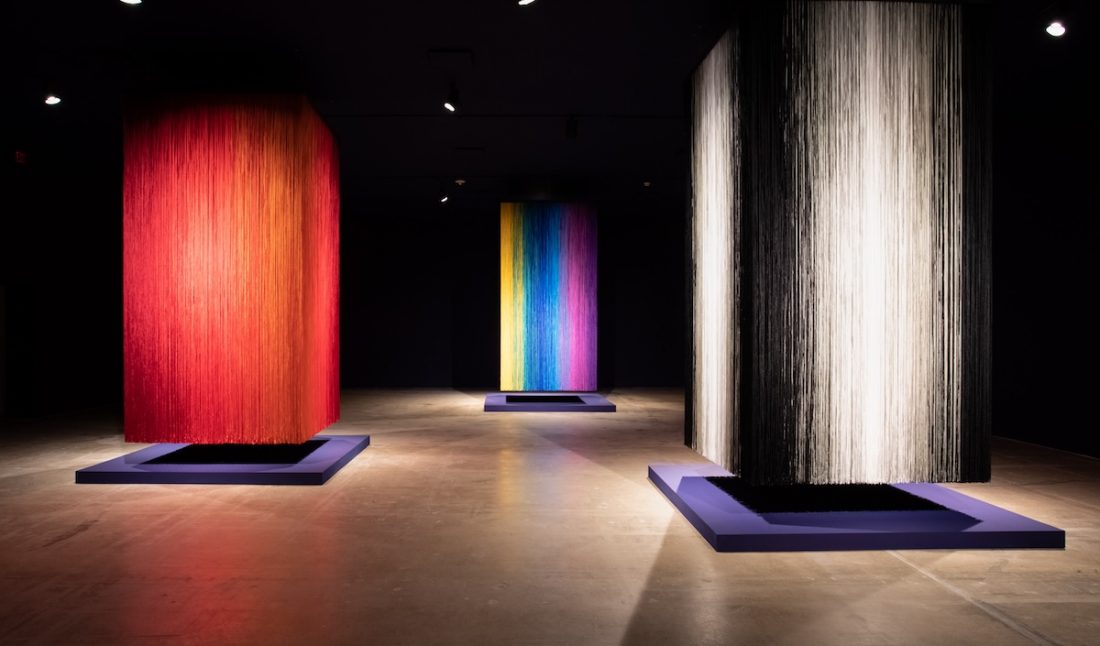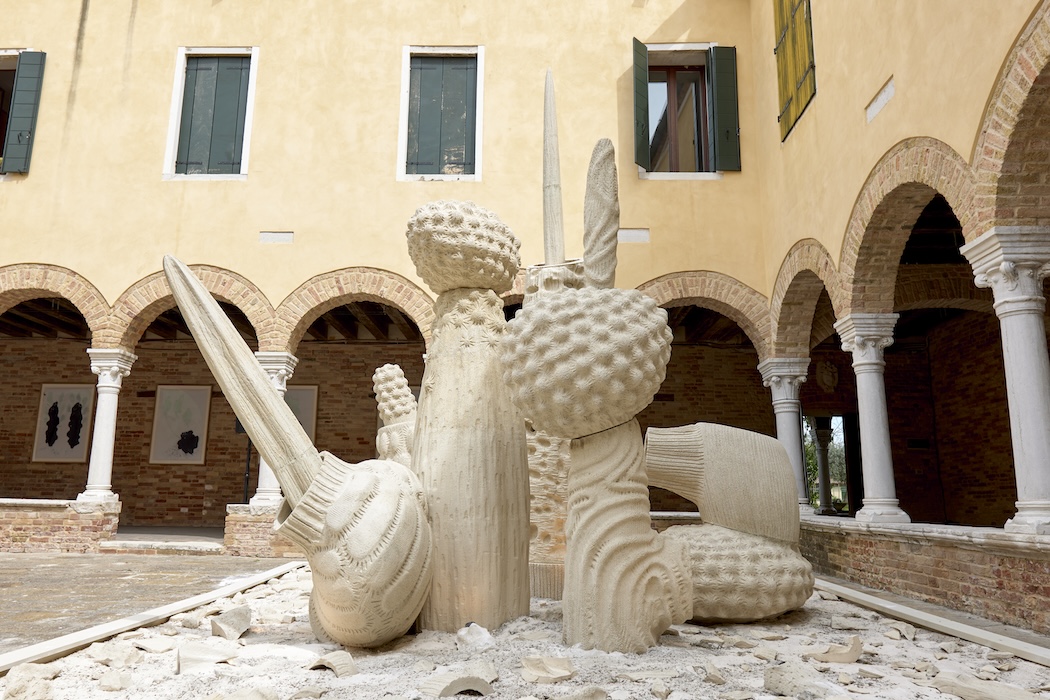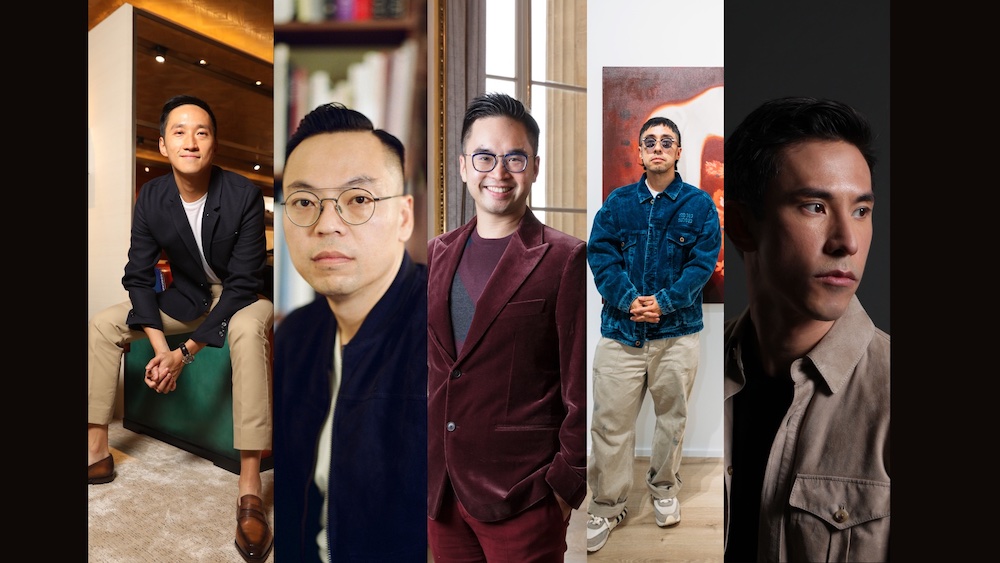As President of the Arison Arts Foundation, Sarah Arison leads the private grant-making organization in the meaningful support of emerging creatives and pioneering institutions. On April 20 the curtain is raised on the 60th Venice Biennale, and our previous guest editor of Whitewaller Miami issues generously lends insider tips on what to take in during a parade of jubilant festivities.
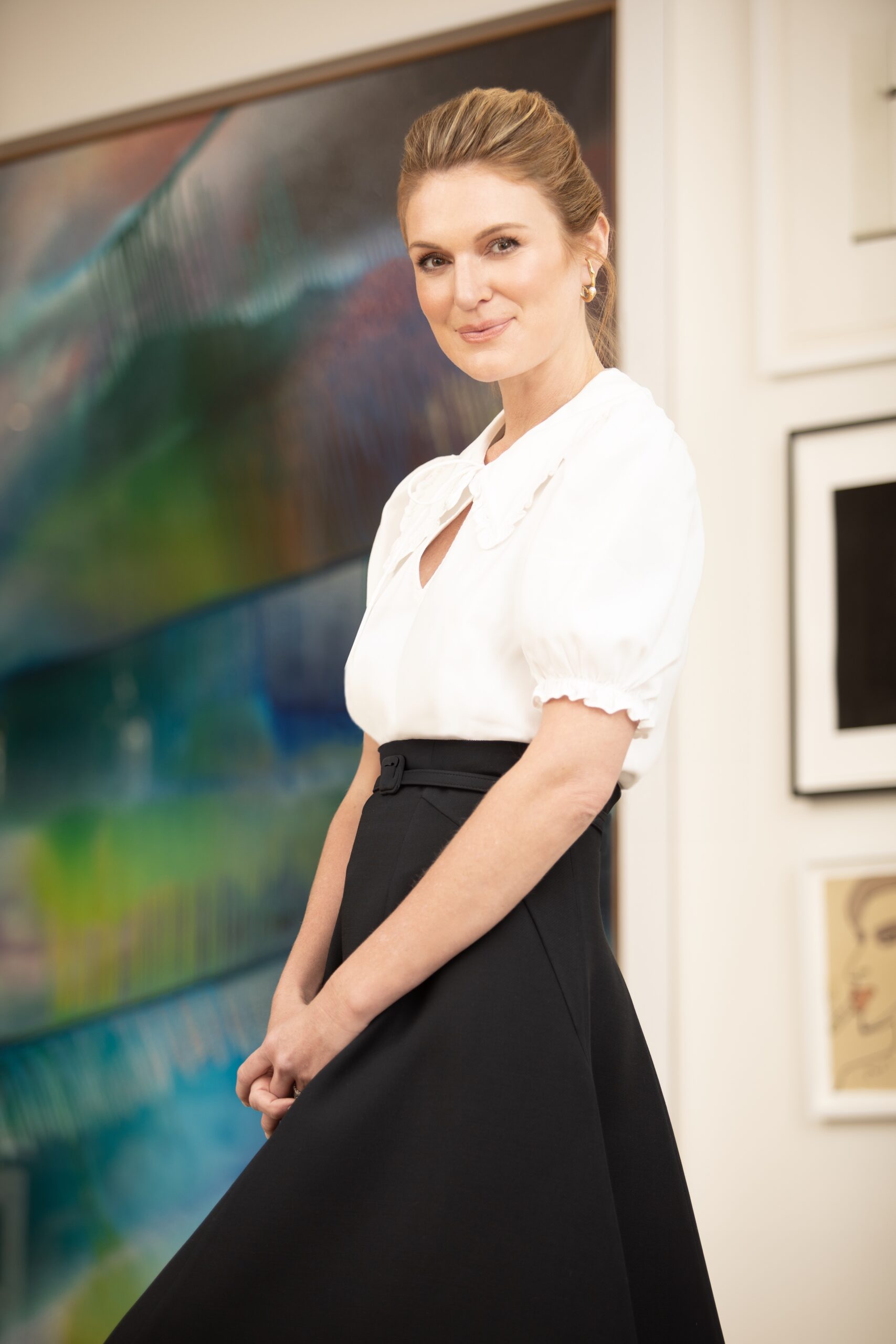 Portrait of Sarah Arison by Abbey Drucker.
Portrait of Sarah Arison by Abbey Drucker.
WHITEWALL: What brings you to Venice this April?
SARAH ARISON: The Venice Biennale is probably my favorite art event all year! It also holds a very special place in my heart as my husband and I got engaged during the Biennale 9 years ago, and then married in Venice the following year. This year will be particularly exciting for me as I’m involved with a Pavilion for the first time—I’m supporting Jeffrey Gibson‘s US Pavilion and am so honored to be able to participate.
WW: Within your many roles—President of the Arison Arts Foundation, serving on several boards, as a collector and philanthropist—why is Venice an important visit?
SA: I love that I get to see my friends and peers from all over the world in Venice. Also, I think it offers the most amazing insight into what’s going on in countries around the world—seeing the artists they’ve chosen to represent them, and the themes that emerge are fascinating and enlightening. I also love that, unlike art fairs, there’s no commercial aspect to it—it’s just about discovering artists and seeing art!
“I think it offers the most amazing insight into what’s going on in countries around the world,” — Sarah Arison
WW: What are the pavilions on your must-see list?
SA: Obviously Jeffrey Gibson at the US pavilion! I’m looking forward to the Canadian Pavilion as I discovered Kapwani Kiwanga at the 2022 Biennale, fell in love with her work there, and have been following her ever since. I can’t wait to see Wael Shawky‘s Egypt Pavilion—we had his epic show at MoMA PS1 in 2015 and it was unforgettable. The collection of artists representing Nigeria is incredible and I can’t wait to see what they do there.
WW: Which artists’ work are you excited to see in the main exhibition?
SA: I’m so excited to see Pacita Abad—we just opened her show at MoMA PS1 and her work is stunning. Some of my favorites are also included—Etel Adnan, Simone Forti, Lauren Halsey, Carmen Herrera, Salman Toor…I think the exciting thing this year is that there are so many artists I’ve never heard of, so I can’t wait to discover new favorites!
WW: What are you looking forward to seeing outside the Giardini and Arsenale?
SA: de Kooning at Accademia, Les Lalanne at Palazzo Rota Ivancich, Pierre Huyghe at Punta della Dogana, and Julie Mehretu at Palazzo Grassi.
Venice Biennale First-Timer Advice, According to Sarah Arison
WW: Any advice for someone visiting Venice for the biennale for the first time?
SA: WEAR COMFORTABLE SHOES! Two years ago, I did 27,000 steps in one day….and there are cobblestones everywhere 🙂 Also, try to plan out everything you want to visit and group it by location so you’re not taking 15 vaporettos per day trying to criss-cross the city. Finally, eat A LOT of gelato at SuSo.
Sarah Arison’s Insider Tips
1. Jeffrey Gibson at the US Pavilion, with “the space in which to place me”
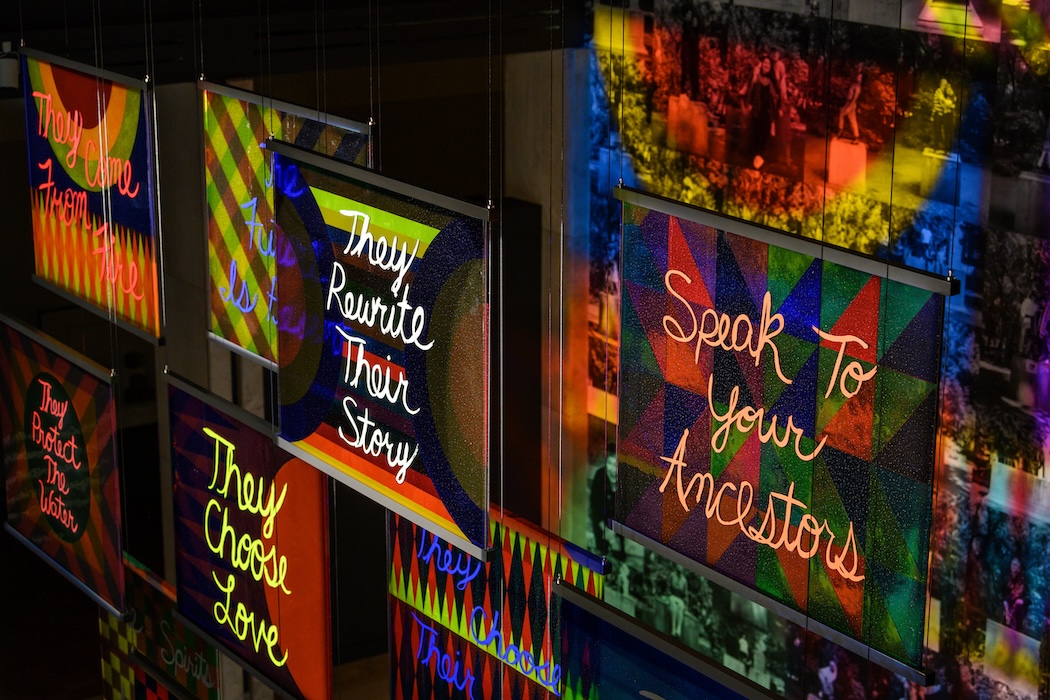 Jeffrey Gibson, “They Come From Fire,” courtesy of Portland Art Museum.
Jeffrey Gibson, “They Come From Fire,” courtesy of Portland Art Museum.
Jeffrey Gibson’s selection to represent the United States at the 60th Venice Biennale marks the first solo presentation of an Indigenous artist for the U.S. Pavilion. the space in which to place me is commissioned by Kathleen Ash-Milby (Curator of Native American Art, Portland Art Museum), Louis Grachos (Phillips Executive Director, SITE Santa Fe), and Abigail Winograd (Independent Curator) and is presented jointly by the Portland Art Museum and SITE Santa Fe. Gibson has forged an interdisciplinary practice and hybrid visual language characterized by a bold use of color, pattern, and text that combines American, Indigenous, and Queer histories with references to popular subcultures, literature, and global aesthetic and artistic traditions. — Source
2. Pacita Abad at Biennale Arte 2024
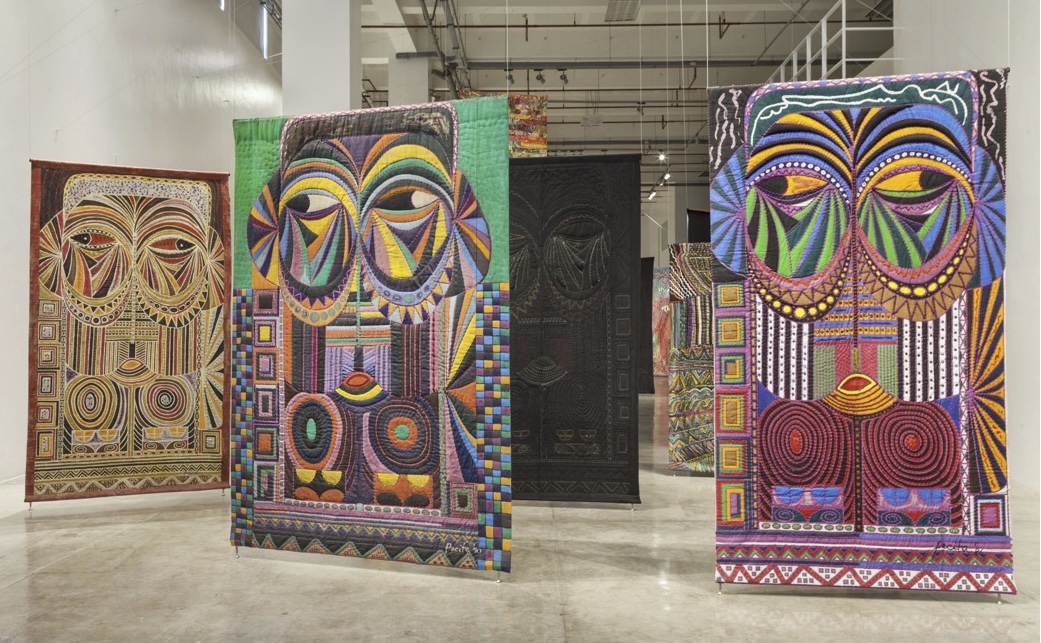 Installation view of works by Pacita Abad, published by Tina Kim Gallery.
Installation view of works by Pacita Abad, published by Tina Kim Gallery.
Widely defined by her use of color and the materiality in her work, Pacita’s oeuvre featured an immense array of subject matter, from tribal masks and social realist tableaus to lush and intricately rendered underwater scenes and abstractions. Accumulating materials, techniques, and subjects from her vast travels, oftentimes within the same composition, Pacita was uniquely positioned to explore modernity’s uneven development with the greatest care, as a figure born outside of the metropole. Her work predates contemporary discourses around postcolonial feminisms, globalization, and transnationalism, offering an intuitive understanding of the mutability and heritability of traditions in the places she lived. — Source
3. Lauren Halsey at 60th Biennale di Venezia
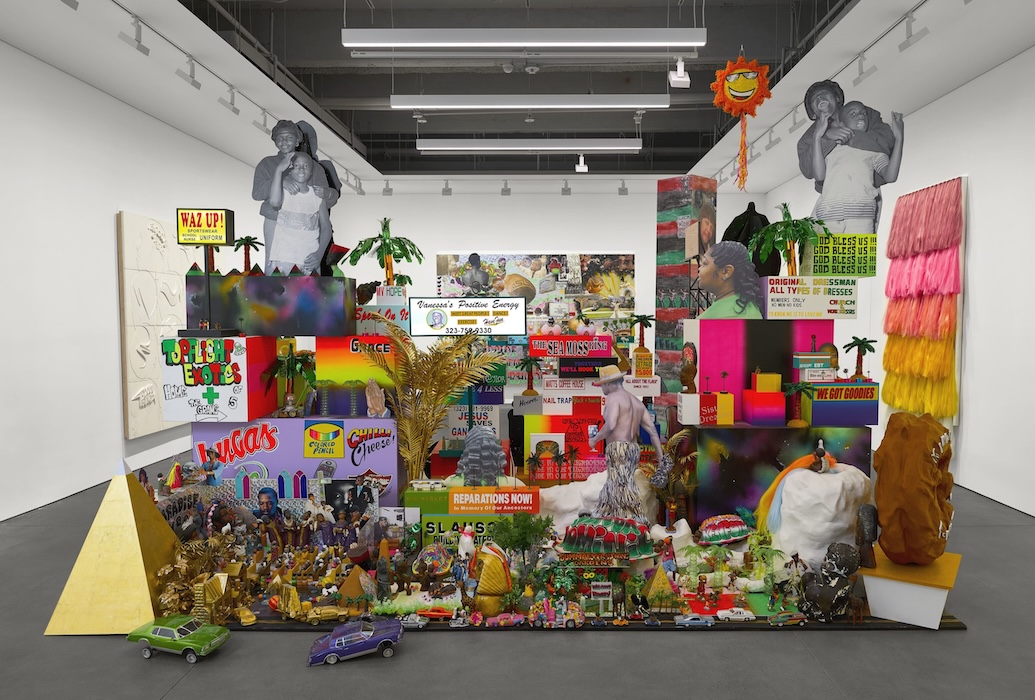 Installation view, Lauren Halsey, May 6 – June 11, 2022, David Kordansky Gallery, New York_ photo by Andy Romer, courtesy of David Kordansky Gallery.
Installation view, Lauren Halsey, May 6 – June 11, 2022, David Kordansky Gallery, New York_ photo by Andy Romer, courtesy of David Kordansky Gallery.
Based in South Central Los Angeles, where her family has lived for generations, Lauren Halsey creates immersive installations that bridge sculpture and architecture, and graphically maximalist collages that blend real and imagined geographies. She recontextualizes and reinterprets local vernacular sources such as flyers, murals, signs, and tags—icons of pride, autonomy, initiative, and resilience. Both celebrating Black cultural expressions and archiving them, Halsey’s work offers a form of creative resistance to the forces of gentrification. In addition to the signs and symbols of contemporary South Central, the artist employs the iconography of ancient Egypt as a means of reclaiming lost legacies. She is also inspired by the Afrofuturist aesthetics of funk music and the utopian architecture proposed in the 1960s by Archigram and Superstudio. — Source
4. Pierre Huyghe. Liminal at Punta della Dogana
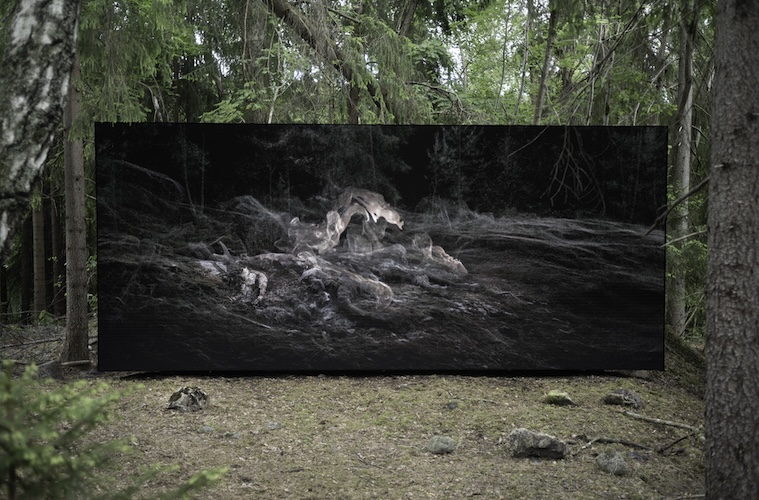 Pierre Huyghe, “Variants,” 2021 – ongoing; photo by Ola Rindal, © Pierre Huyghe, by SIAE 2023,
courtesy of the artist, Kistefos Museum, and Hauser and Wirth, London.
Pierre Huyghe, “Variants,” 2021 – ongoing; photo by Ola Rindal, © Pierre Huyghe, by SIAE 2023,
courtesy of the artist, Kistefos Museum, and Hauser and Wirth, London.
Liminal, an exhibition created by Pierre Huyghe in close collaboration with curator Anne Stenne, presents major new creations alongside works from the last ten years, particularly from the Pinault Collection. Pierre Huyghe has since long questioned the relation between the human and the non-human, and conceives his works as speculative fictions from which emerge other modalities of the world. Fictions, to him, are “vehicles for accessing the possible or the impossible—what could be or could not be.” Pierre Huyghe transforms Punta della Dogana into a dynamic, sensitive milieu perpetually evolving. The exhibition is a transitory state inhabited by human and non-human creatures and becomes the site of formation of subjectivities that are constantly learning, changing, and hybridizing. Their memories are expanding with information captured from events, both perceptible and imperceptible, that permeate the exhibition. — Source
5. Julie Mehretu. Ensemble at Palazzo Grassi
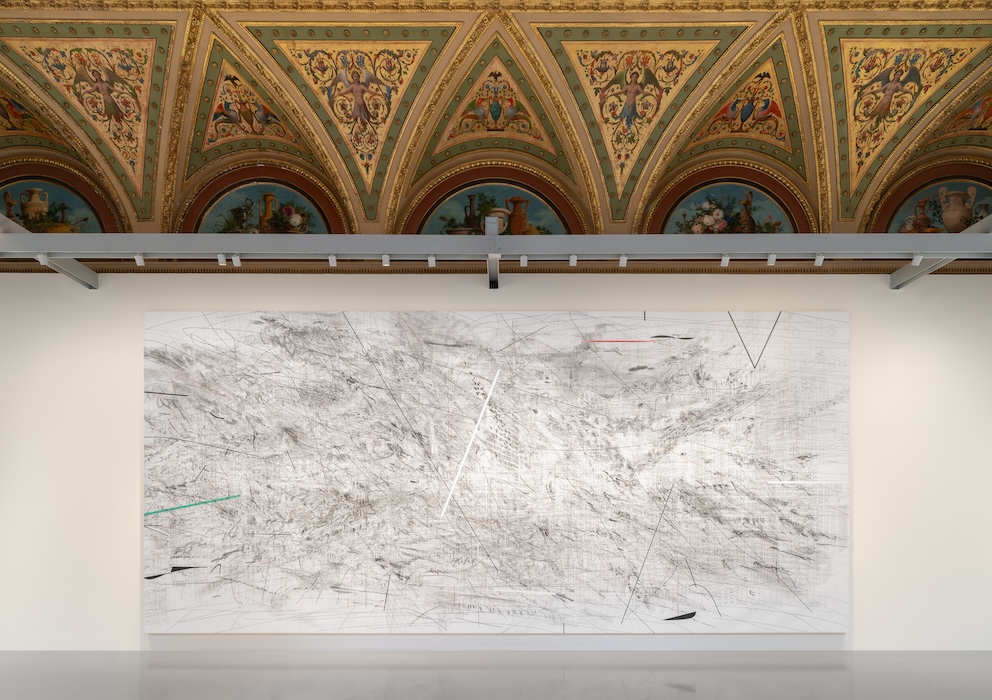 Installation view, “Julie Mehretu. Ensemble”, 2024, photo by Marco Cappelletti, © Palazzo Grassi, Pinault Collection.
Installation view, “Julie Mehretu. Ensemble”, 2024, photo by Marco Cappelletti, © Palazzo Grassi, Pinault Collection.
Presented at Palazzo Grassi from 17 March 2024 to 6 January 2025, “Ensemble” is the largest exhibition of Julie Mehretu’s work to date in Europe. Curated by Caroline Bourgeois, Chief Curator of the Pinault Collection, with Julie Mehretu, the exhibition brings together a selection of more than fifty works, between painting and printmaking, that the artist produced over the timespan of 25 years, including several of the artist’s recent paintings from 2021-2024. Presented over two floors of Palazzo Grassi, the exhibition unites 17 works from the Pinault Collection, as well as loans from international museums and private collections. — Source
6. Gelato Refreshment at Suso
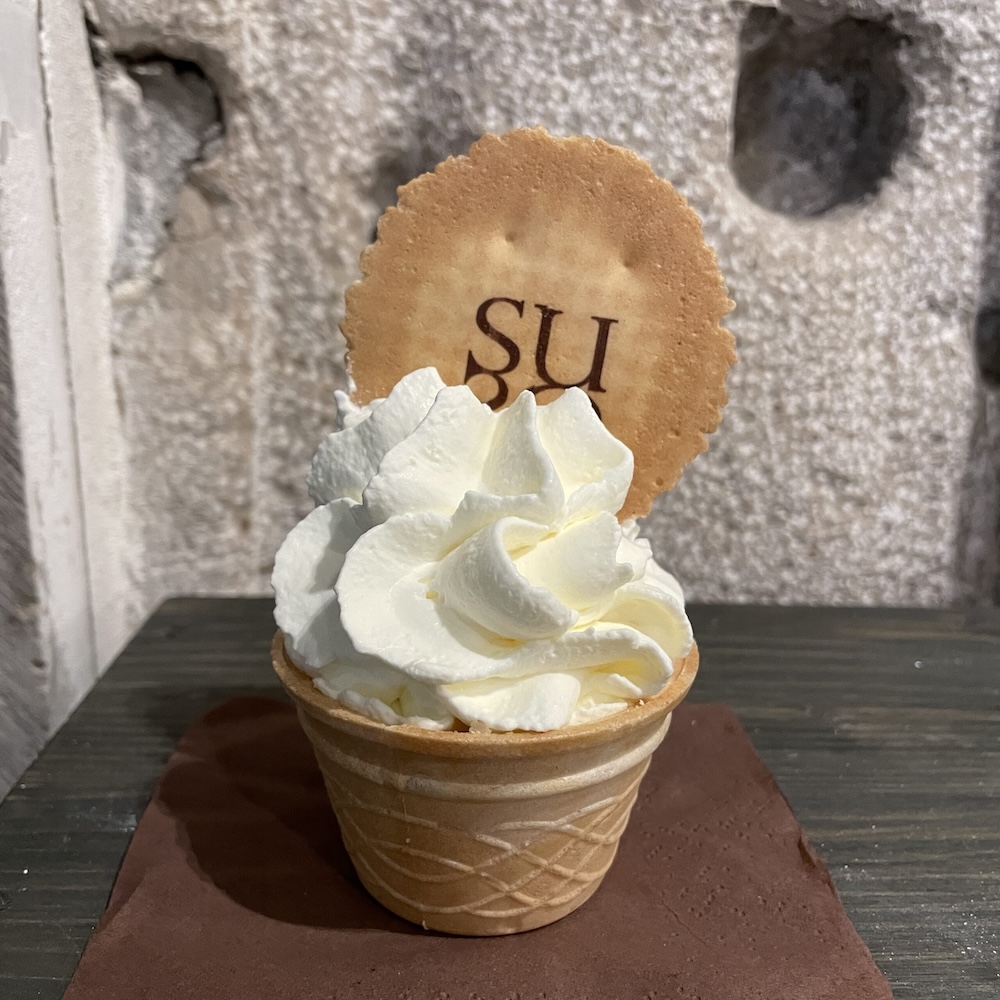 Courtesy of Suso.
Courtesy of Suso.
In 2010, still unknown to most, the vision was already clear: to combine ice cream and confectionery, giving birth to a gelateria with unique natural creations, designed to give a sensory experience. Taste, visual appeal, aroma… a Suso gelato tantalizes and whets the appetite for discovery in those looking for something they can only find in Suso gelaterias. — Source






